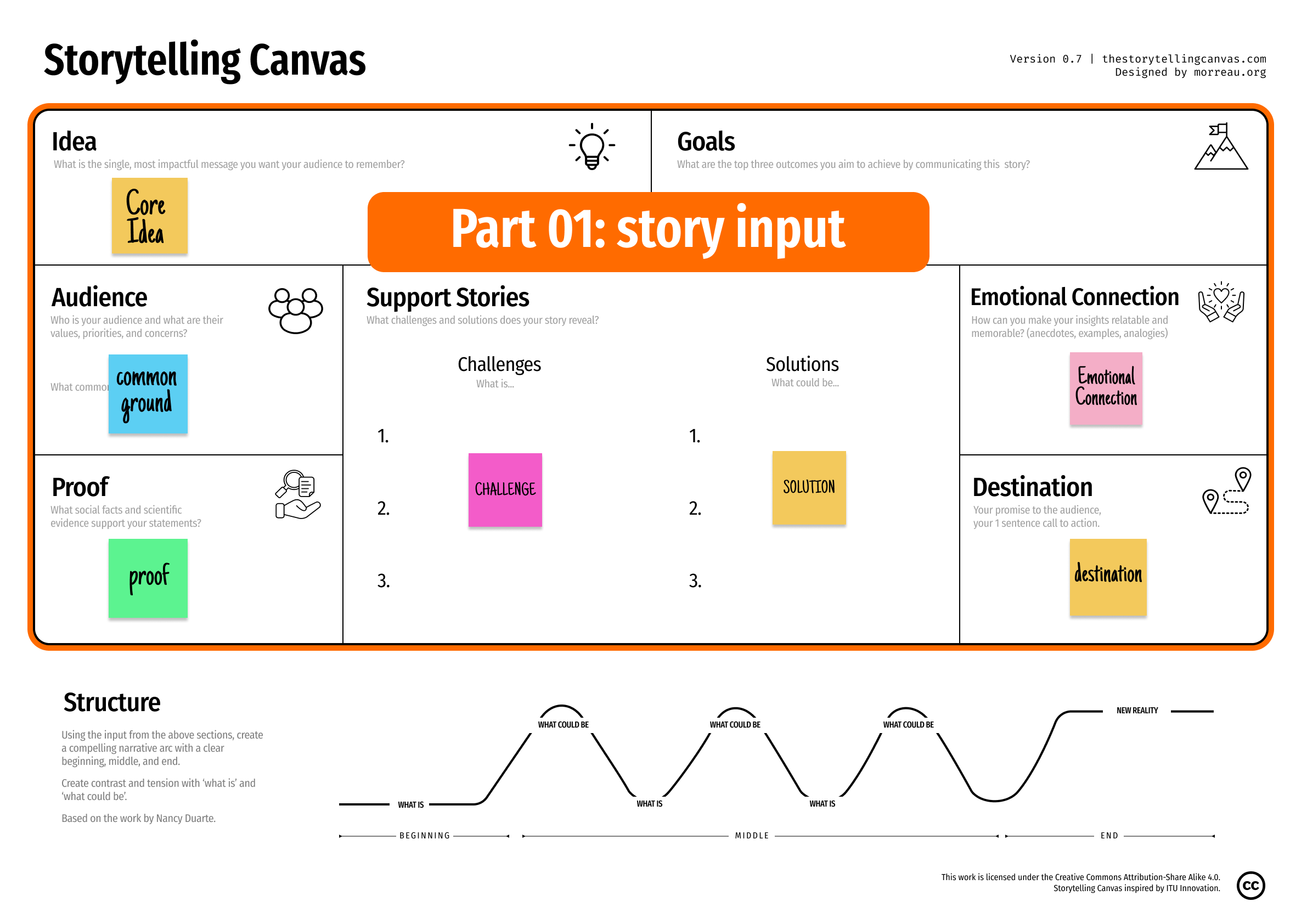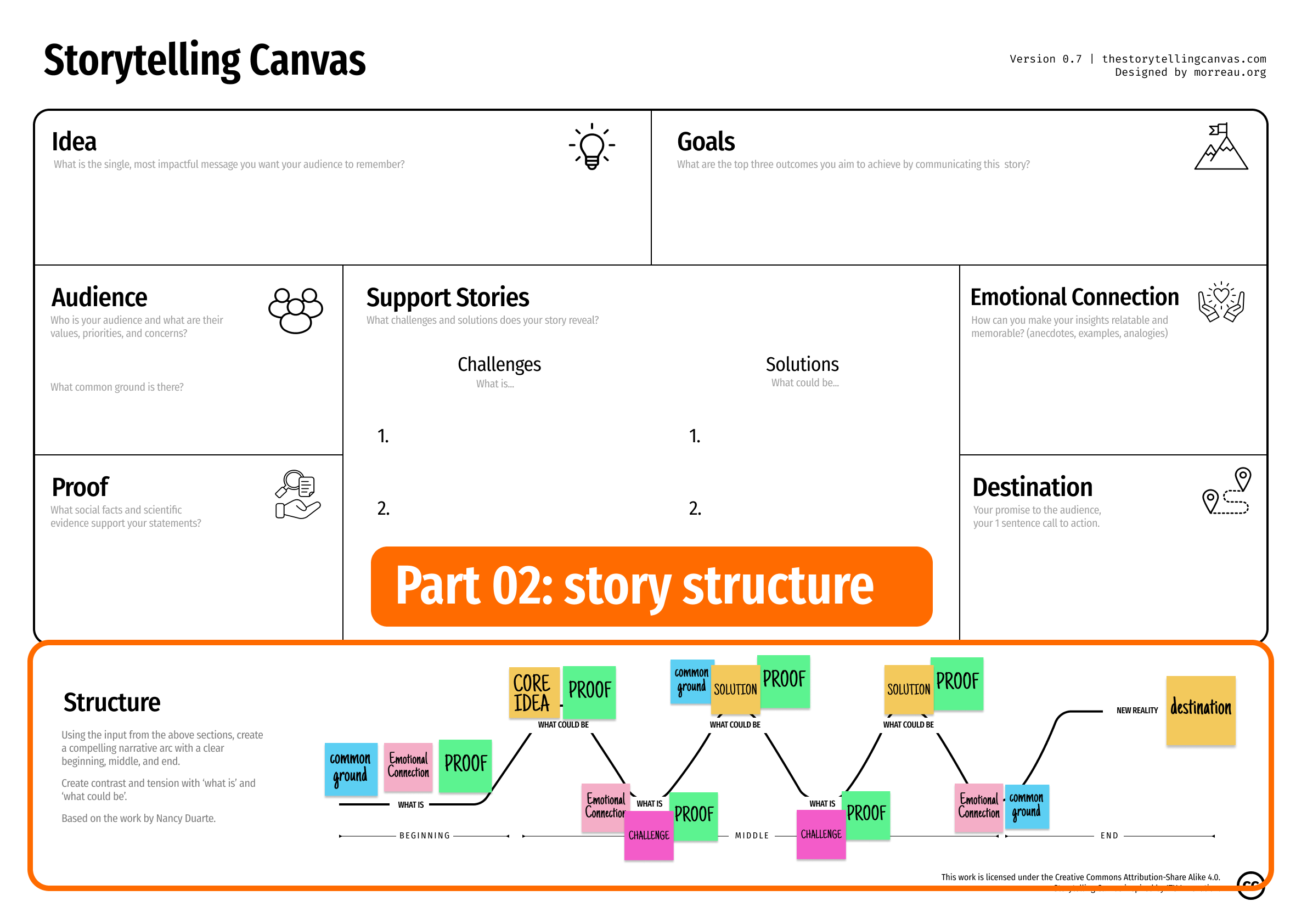Storytelling Canvas Guide Introduction
In today’s fast-paced, information-driven world, the ability to effectively communicate your ideas and engage your audience is more crucial than ever. This is where the Storytelling Canvas comes in – a powerful tool designed to help you craft compelling, memorable stories that resonate with your target audience.
The Storytelling Canvas, similar to the Business Model Canvas, is a visual framework that guides you through the essential elements of a well-structured story. By breaking down the storytelling process into eight key sections, the canvas helps you organize your thoughts, clarify your message, and create a narrative that captures your audience’s attention and inspires action.
In this comprehensive tutorial, we’ll dive deep into each section of the Storytelling Canvas, providing detailed explanations, examples, and practical exercises to help you master the art of storytelling. Whether you’re a marketer, entrepreneur, or simply looking to improve your communication skills, this guide will equip you with the knowledge and tools you need to create stories that make an impact.
make sure to download the canvas before you start.
Table of Contents
Step 1. the Key Idea
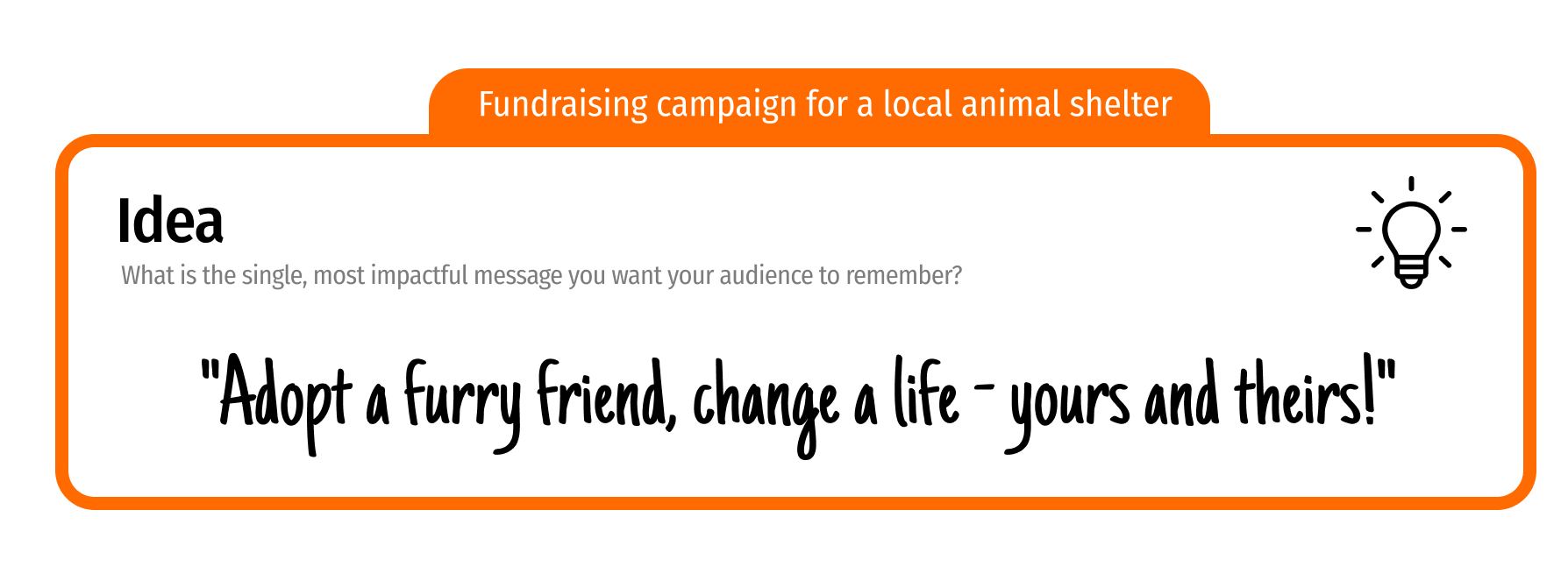
Question: What is the single, compelling message you want your audience to take away from your story?
The Idea section is the foundation of your story. It’s where you distill your message into a single, compelling statement that captures the essence of what you want to communicate.
Explanation: Your idea should be concise, compelling, and easily understandable. It should distill your data into a memorable message that conveys the importance and relevance of your story.
Tips:
- Brainstorm multiple ideas and refine them until you find the most impactful one.
- Ensure your idea is relevant and resonates with your audience’s needs and priorities.
Step 2. Goals
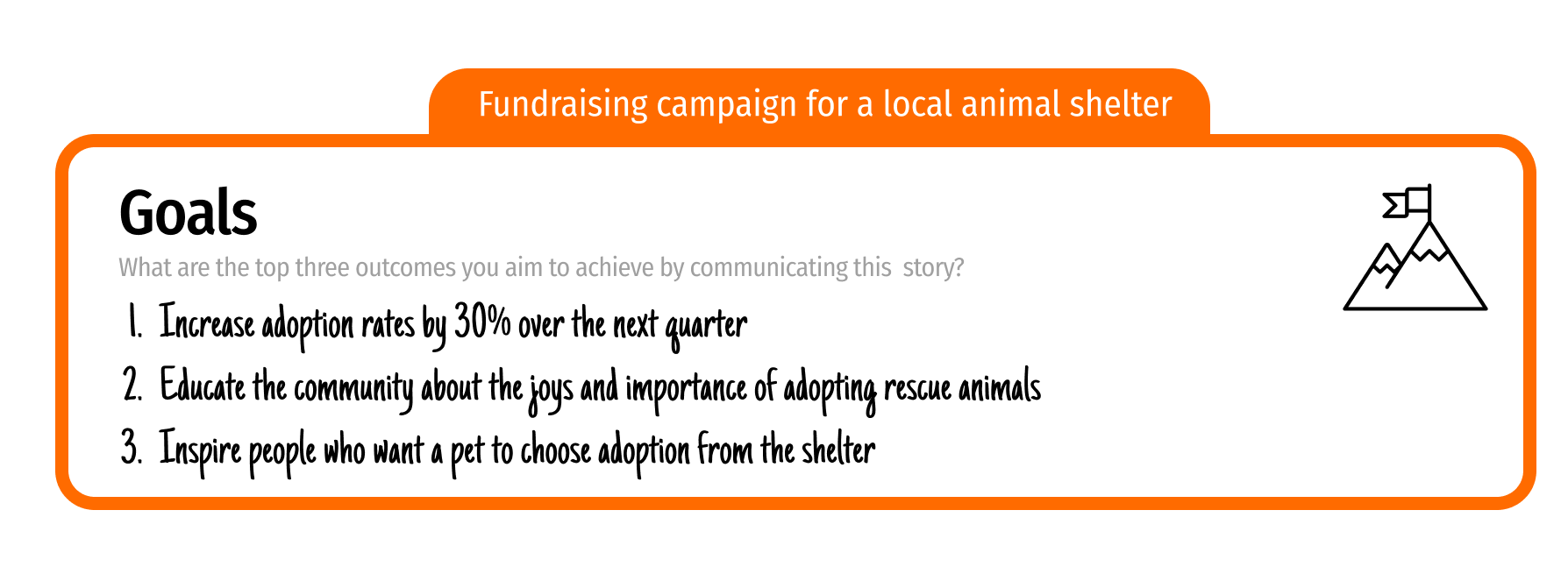
Question: What are the top three outcomes you want to achieve by sharing this story?
In the Goals section, you define the top three outcomes you aim to achieve by sharing your story. These goals should be specific, measurable, and aligned with your overall objectives.
Explanation: Your goals should be specific, measurable, and actionable. They should outline what you want to achieve through your story and how it will benefit your audience.
Tips:
- Use the SMART framework (Specific, Measurable, Achievable, Relevant, Time-bound) to craft effective goals.
- Prioritize your goals based on their importance and feasibility.
3. Audience
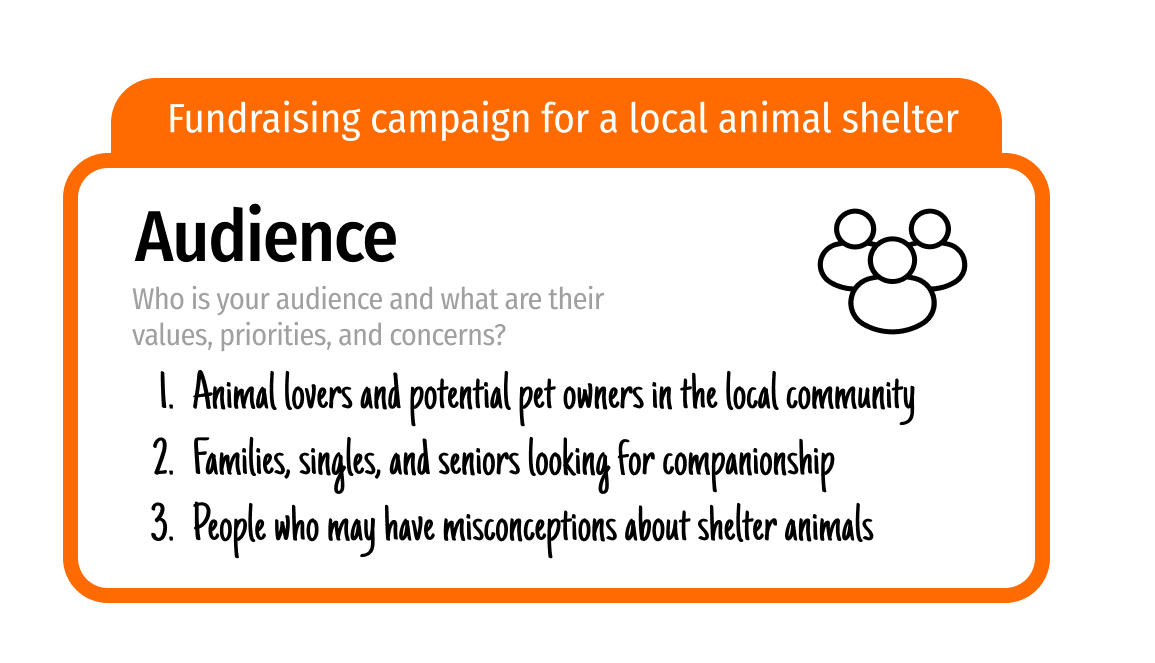
Question: Who are you telling this story to, and what do they care about?
Explanation: Understanding your audience is crucial to crafting a story that resonates. In this section, you identify your target audience and explore their values, priorities, concerns, and existing knowledge about your topic.
Tips:
- Create detailed audience personas to better understand their perspectives.
- Use empathy mapping to identify their pain points and motivations.
- Highlight shared experiences or interests to establish a connection.
4. Proof
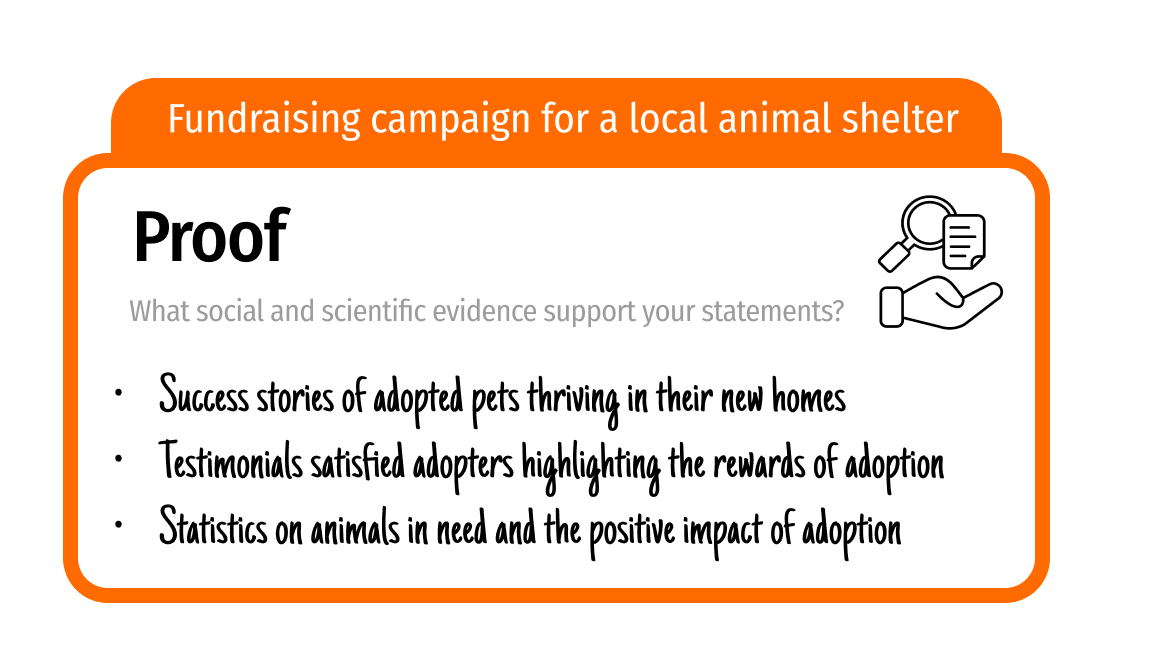
Question: What evidence supports your key idea and makes your story credible?
Explanation: To build credibility and trust with your audience, it’s essential to support your story with evidence. In the Proof section, you identify the social facts, scientific data, statistics, case studies, or expert opinions that reinforce your message.
Tips:
- Use reputable sources and cite them properly.
- Present data visually through charts, graphs, or infographics to make it more engaging.
- Balance data with storytelling to maintain audience interest.
5. Emotional Connection
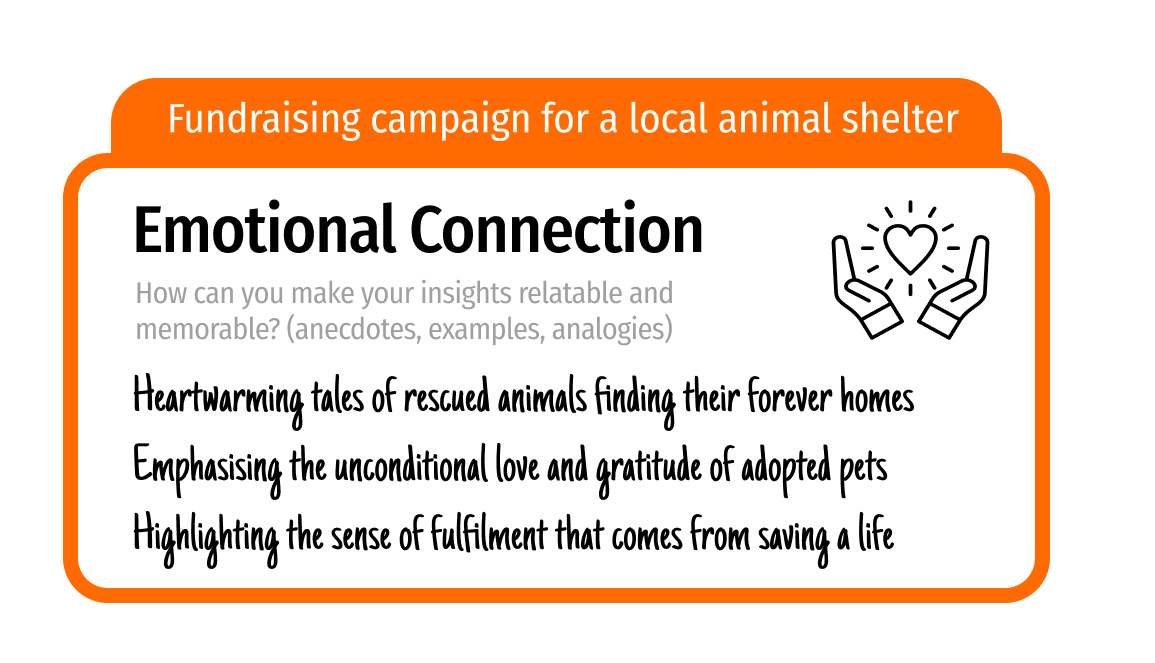
Question: How can you make your data and insights relatable and memorable on an emotional level?
Explanation: Humans are wired for stories. Stories that evoke emotions are more likely to be remembered and shared. In this section, you explore ways to make your data relatable and memorable through the use of anecdotes, real-world examples, personal stories, analogies, and vivid language.
Tips:
- Use vivid language and sensory details to paint a picture in your audience’s mind.
- Leverage the power of metaphors and analogies to explain complex ideas.
- Share personal stories or experiences to humanize your narrative.
6. Destination
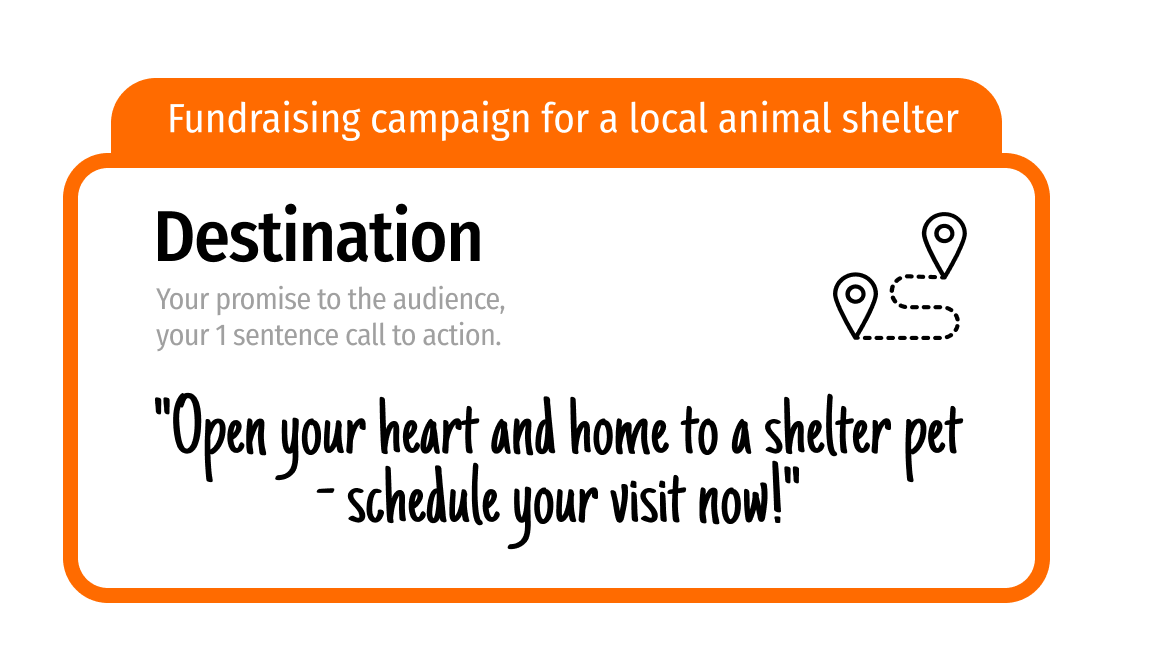
Question: What is the one specific action you want your audience to take after hearing your story?
Explanation: The Destination section is where you define your call to action – the one thing you want your audience to do after hearing your story. This should be a clear, concise statement that motivates your audience to take the desired action.
Tips:
- Use strong, compelling language to motivate your audience.
- Make your call-to-action easy to understand and follow.
- Reiterate the benefits of taking action to encourage participation.
7. Support Stories
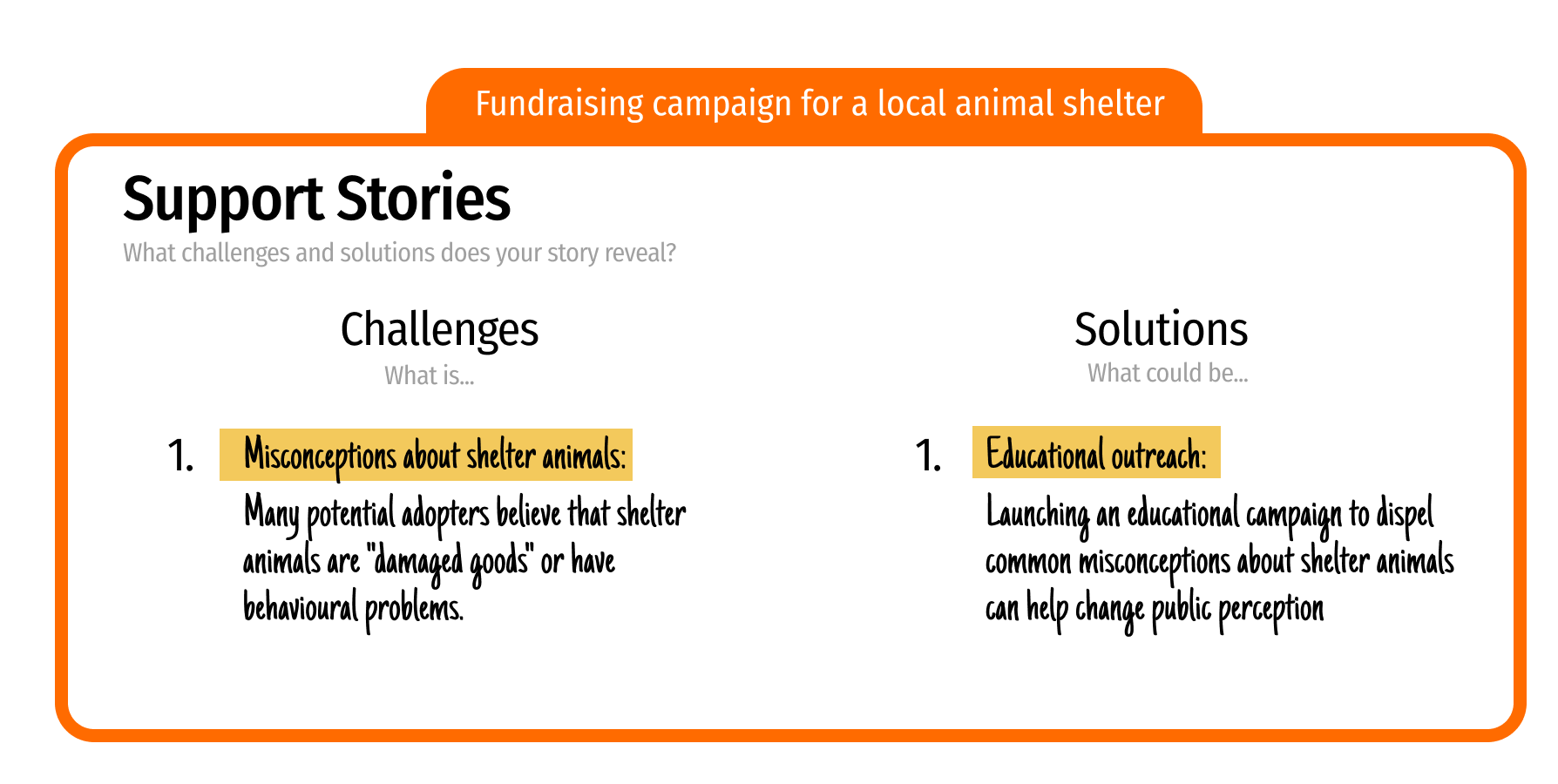
Question: What specific examples and case studies can you use to illustrate the challenges and solutions your data reveals?
In the Support Stories section, you identify the challenges and solutions that your data reveals. These stories serve to reinforce your main message and provide additional context and depth to your narrative.
Explanation: Support stories bring your data to life and make it more relatable for your audience. By highlighting specific challenges and solutions, you create a sense of urgency and inspire action.
Tips:
- Use real-world examples and case studies to illustrate challenges and solutions.
- Highlight the human impact of these stories to evoke an emotional response.
- Ensure your support stories align with and reinforce your core idea.
8. Structure

Question: How can you arrange the elements of your story into a compelling narrative arc that keeps your audience engaged?
The final section of the Storytelling Canvas focuses on the structure of your story. Here, you create a compelling narrative arc with a clear beginning, middle, and end, using the “what is” and “what could be” framework to create contrast and tension.
Explanation: A well-structured story guides your audience through a journey, keeping them engaged and building towards a satisfying conclusion. By alternating between the current reality and the potential future, you create a sense of momentum and desire for change.
Tips:
- Use a traditional three-act structure (setup, confrontation, resolution) as a starting point.
- Begin with a hook that grabs attention and sets the stage for your story.
- Use the “messy middle” to highlight challenges and build anticipation for the resolution.
- Conclude with a clear call-to-action that inspires your audience to embrace “what could be.”

